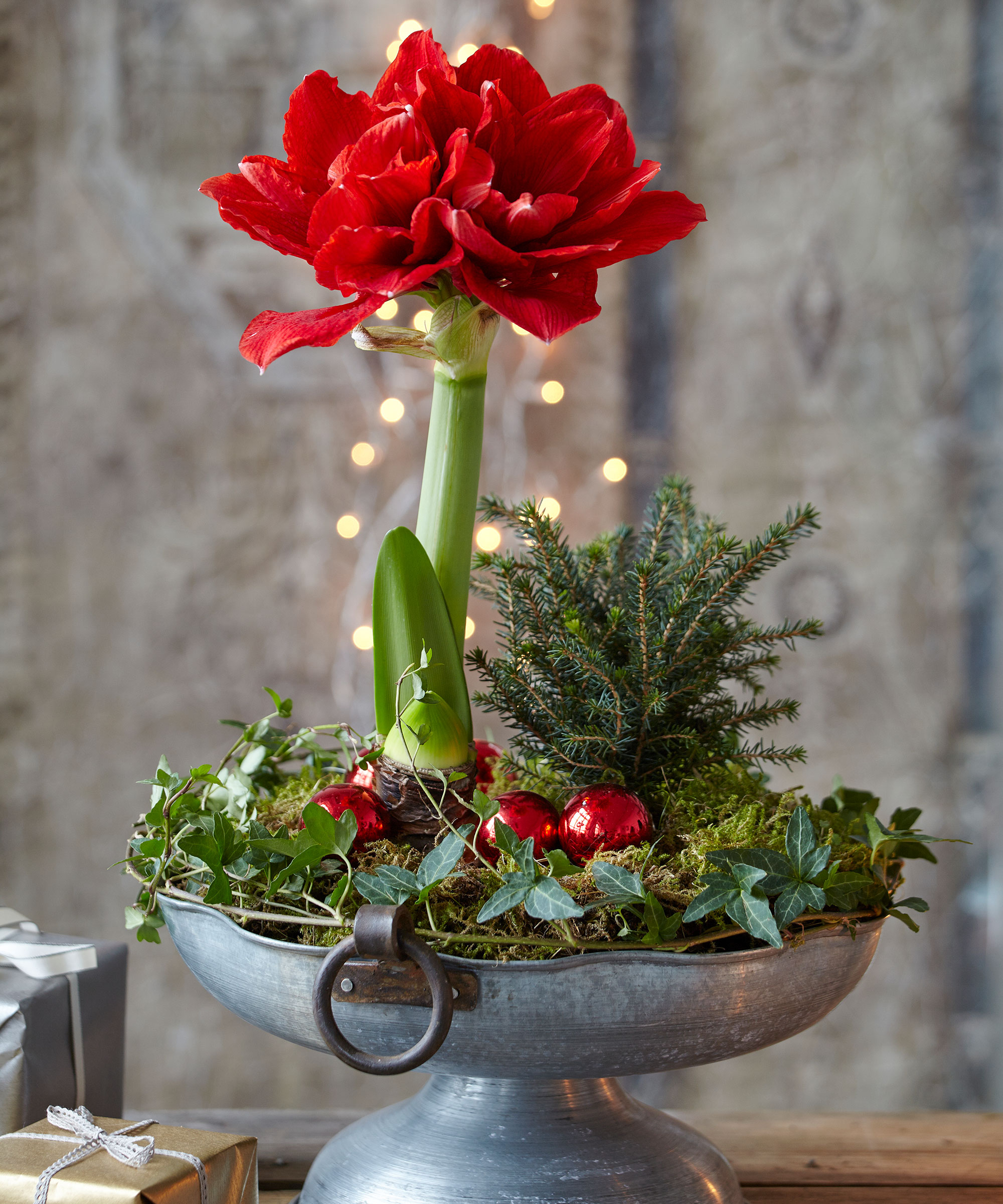10 Christmas Cactus Problems Solved: Diagnose Common Issues For Healthy Flowering Plants
Is your Christmas cactus underperforming or in poor health? Diagnose and correct common problems affecting holiday cacti to keep them thriving and blooming.
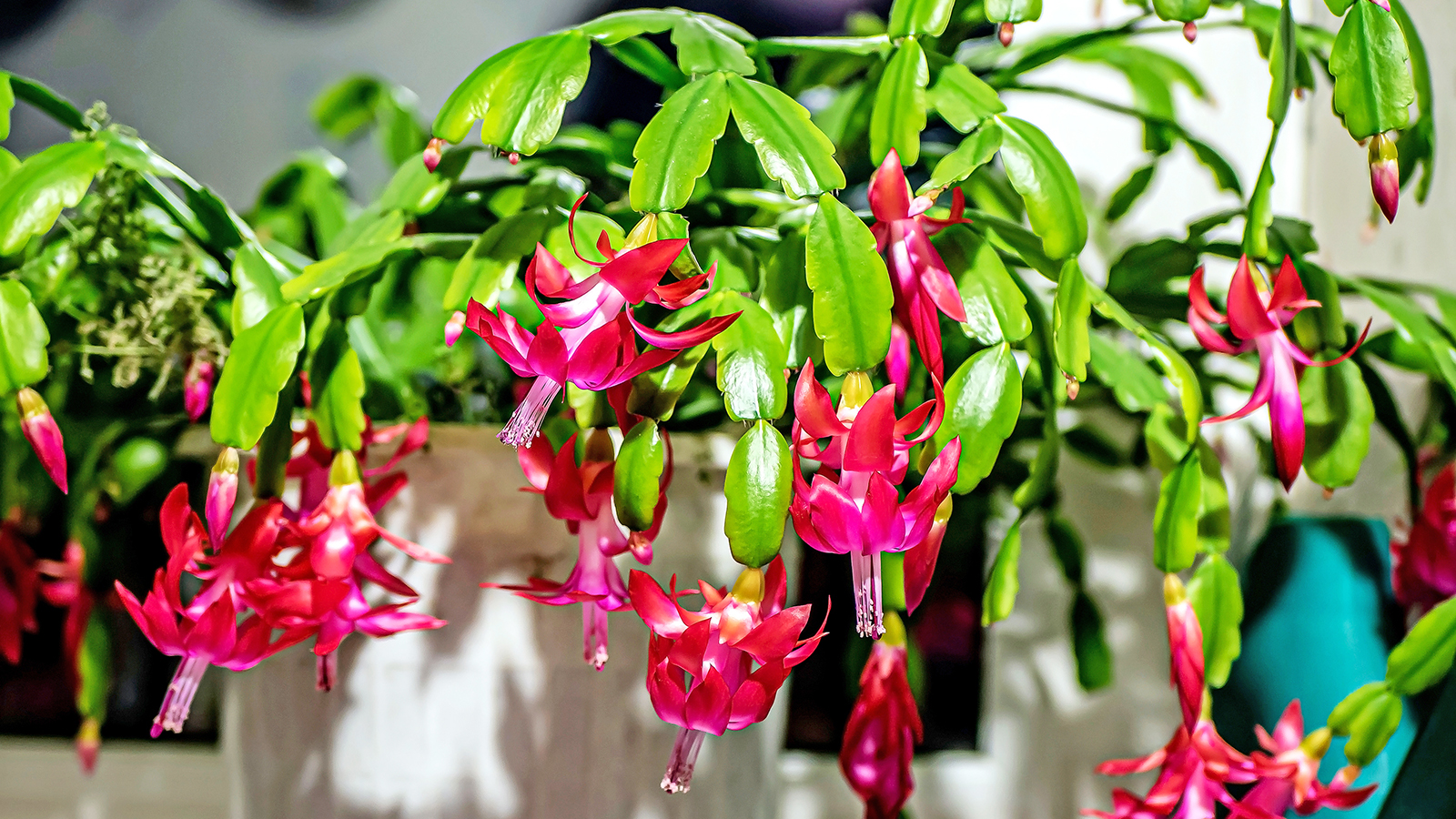

The Christmas cactus (Schlumbergera x buckleyi) is a beloved holiday plant that, while generally resilient and trouble-free, can sometimes suffer issues. At best, the most common Christmas cactus problems may result in a poor appearance or loss of flowers; but in the worst cases, plants may suffer a decline in health and untimely demise.
Whether your plant is experiencing issues with incorrect Christmas cactus care, disease, pests, or other problems, the sooner you pinpoint the most likely culprit, the quicker you can solve the issue and get your plant back to its blooming loveliness.
While the Christmas cactus is one of the most popular types of holiday cactus, the advice in this guide can be applied to other varieties. Thanksgiving cactus care and Easter cactus care are similar and the plants may be affected by the same issues.
How to Diagnose Christmas Cactus Problems
If your plant is dropping excess plant material, is discolored, fails to produce new leaves and flowers, or has leaves that are puckered or faded, it is stressed.
Many Christmas cactus problems can mimic other issues, so identifying whether you have difficulties with care, disease, or pests can be challenging and a process of elimination.
Take a step back to examine the plant. Firstly, evaluate the cultural care and soil situation. If the plant has correct light and water, and the soil is well-draining and sterile, you can probably move on to pests and disease.
Below we've outlined the key symptoms to spot and how to cure affected plants.
Sign up for the Gardening Know How newsletter today and receive a free copy of our e-book "How to Grow Delicious Tomatoes".
1. Lack of Flowers
Making a Christmas cactus bloom is a priority for most indoor gardeners. The succulents require a plant dormancy period to encourage flowering, which can be created within the home.
In October – about eight weeks before Christmas – move the plant to a slightly cooler spot if necessary. The optimal Christmas cactus temperature is between 60 and 68°F (15 to 20°C).
During the dormancy period, the plant must receive at least 13 hours of total darkness each night – cover it with a box if necessary.
In the daytime, the plant should receive bright, but indirect light. Pale stems and the failure to produce blooms are often a result of inadequate sunlight.
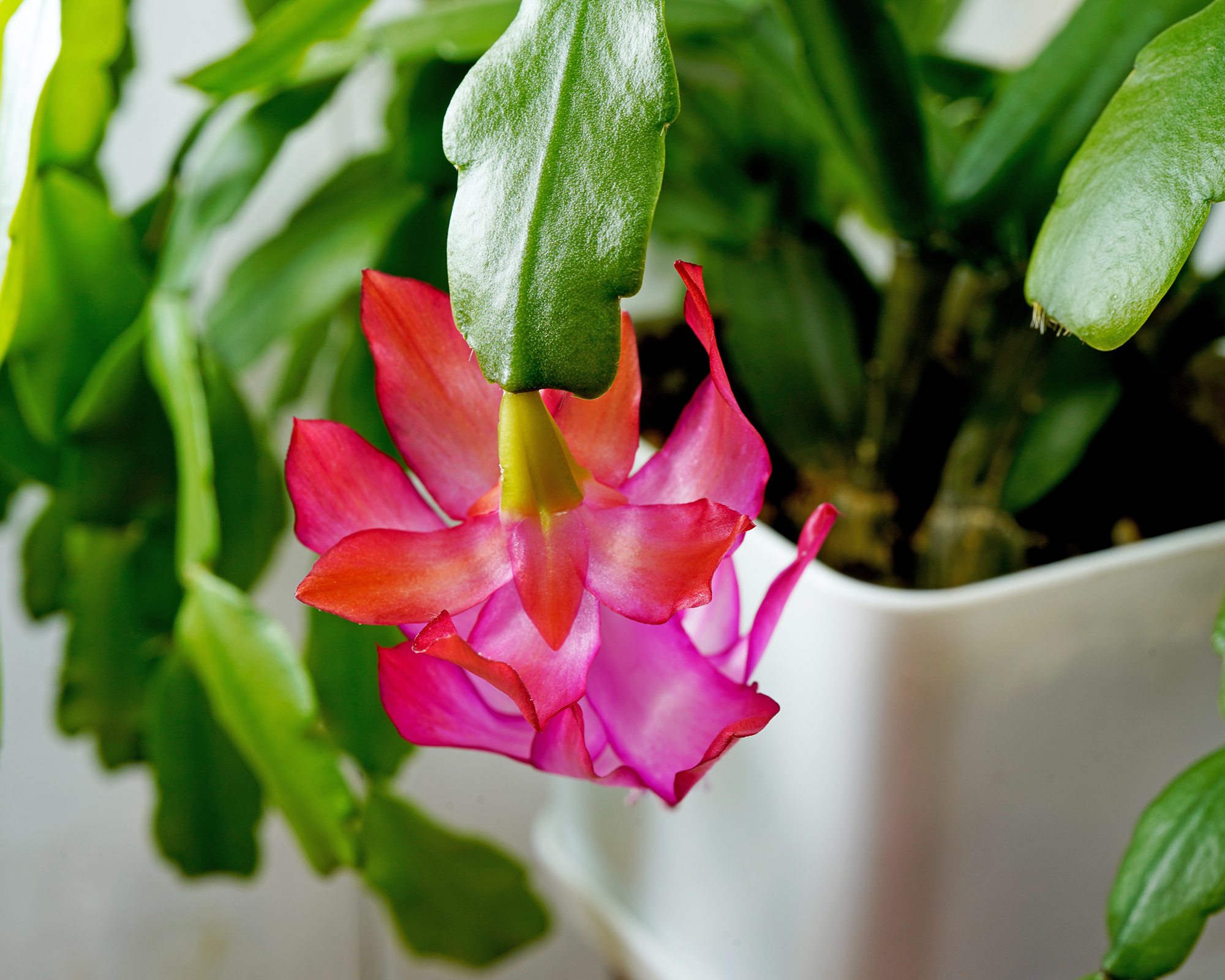
2. Limp and Wilting Cactus
Christmas cactus wilting – often followed by dropping leaves – is a common symptom of incorrect watering.
Christmas cactus watering is a delicate balance. If the soil is very dry, then underwatering is likely the culprit. Give the soil a good drenching and allow it all to drain through.
On the other hand, overly wet soil can result in root rot, which will cause wilting and often yellow leaves. The plant may also smell bad.
You need to act fast to save an overwatered Christmas cactus. Get rid of any standing water, then remove the plant from its container. If any stems appear to have gone soft, then prune them away. Rinse the plant's roots and allow it to dry out for a day on the counter. The following day, repotting the Christmas cactus will help it to recover. Avoid watering for a day or two before starting a new, more conservative watering regime.
In the future, check the soil before watering. Push your finger down to the knuckle to check, and only water when the top inch or so feels dry. If in doubt, invest in a soil meter to test moisture levels and avoid incorrect watering in the future.
3. Leaves Turning Purple or Red
If your Christmas cactus is turning purple or red, then it can be a sign something isn't right. A slight purplish hue to the leaves is normal, but a more noticeable color change may signal poor nutrition.
It is necessary to feed plants throughout the growing season, otherwise they are less likely to flower. The best Christmas cactus fertilizer to use between spring and summer is a balanced houseplant feed, diluted to half strength. Apply once a month at the time of watering. In the fall, you can either stop fertilizing or switch to a low-nitrogen product that won't impede flowering.
As well as using a general houseplant fertilizer, it may be helpful to occasionally feed Christmas cacti with Epsom salts – dilute one teaspoon (5ml) in one gallon of water. This is because the plants have higher magnesium needs than most plants. Apply once a month throughout spring and summer, but not at the same time as fertilizing.
If you have been regularly feeding your Christmas cactus but leaves are turning purple or red, then the plant may be rootbound or the potting soil may be depleted, preventing the absorption of nutrients. Repot into a container the next size up, using a suitable Christmas cactus soil mix, containing perlite or sand to aid drainage.
One other possible culprit of purple and red leaves might be excessive light levels. If the plant receives too much direct light during the summer months, then the leaves may take on a purple tinge. Move the plant to a place where it receives bright but indirect light.
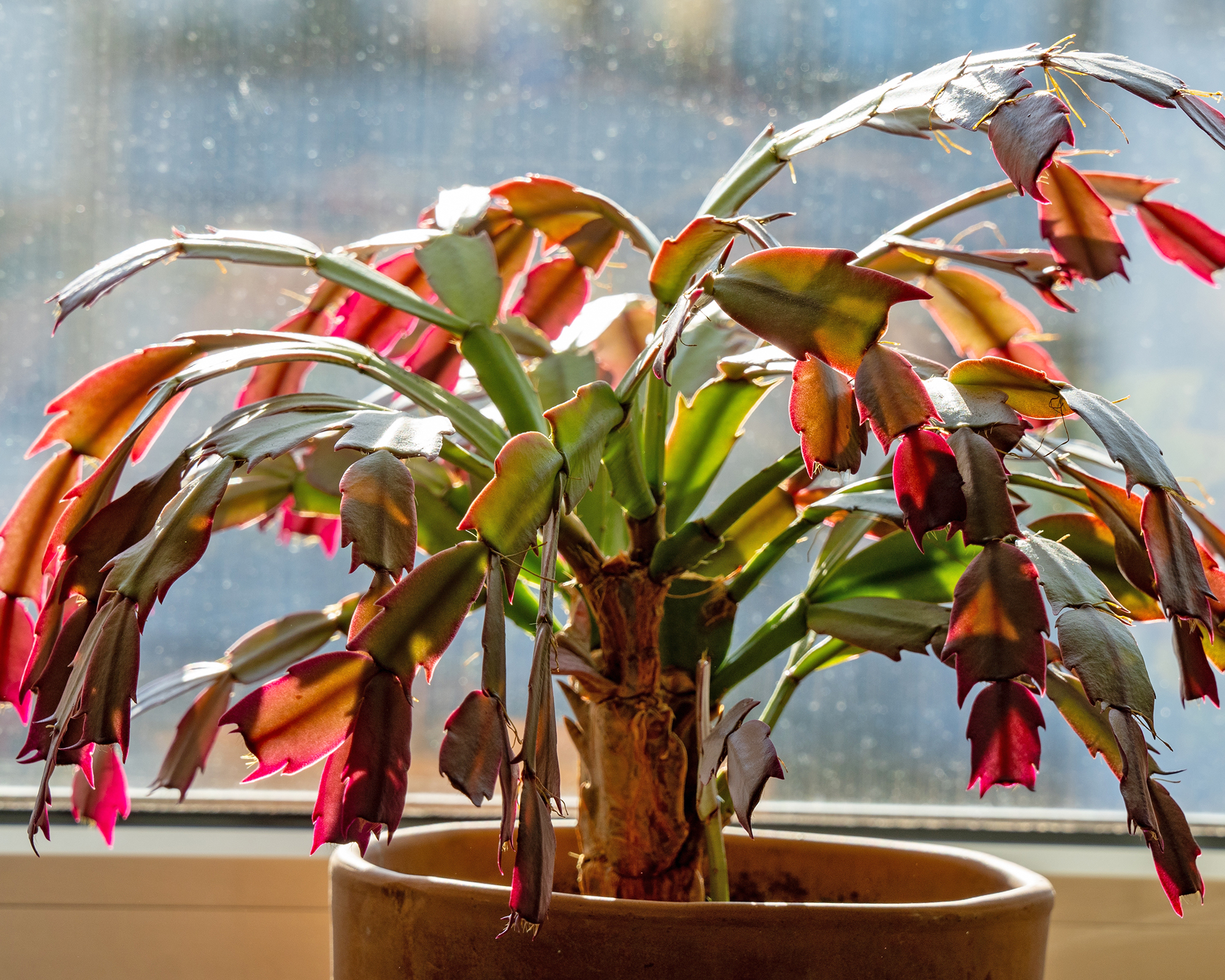
4. Disease
Unfortunately, there are several Christmas cactus diseases that may pose a threat to your plant. The majority of these are fungal, although bacterial disease can occur.
Fungal diseases such as fusarium, pythium, and phytophthora all cause lesions and rot. Look out for discolored leaves, browning stems, mold, and spots. Rather than try to nail down which fungal disease is present, take steps that would eradicate any of these.
As a rule, if a rotting or fungal disease is present, you can try a fungicide applied to the soil as a drench. You could also remove the plant, trim away any diseased roots, disinfect a pot, and repot it in sanitized soil. If the plant continues to decline and become soft and rotten at the soil line, it probably can’t be saved.
Cultural care is key to preventing disease in these plants. A healthy plant will usually not develop disease issues unless the soil is infected or there is an infected plant nearby. Avoiding watering above the plant can keep any pathogen in the soil from splattering onto the plant. Water at the soil line with a soft stream of water.
Use sterile potting mix where possible, which will have killed any pathogens harbored therein. Provide adequate ventilation and airflow to prevent moisture build-up on the stems and leaves. Avoid injuring the plant which can lead to entryways for disease.
5. Root Rot
Christmas cactus root rot is caused by overwatering, and it can quickly prove fatal to plants. The disease may first present itself with yellowing and dropping leaves, but to diagnose the issue you need to check the roots.
Depending on the extent of the root rot, the roots will have begun to blacken, or be slimy with brown decay. The plant and soil will likely have an unpleasant smell.
If you catch root rot early, you might be able to save the plant by trimming and cleaning infected roots, allowing the plant to dry out, then repotting. However, if the disease has progressed, then it's likely a lost cause. If part of the plant appears healthy, then learn how to propagate Christmas cactus, take some cuttings, and discard the plant.
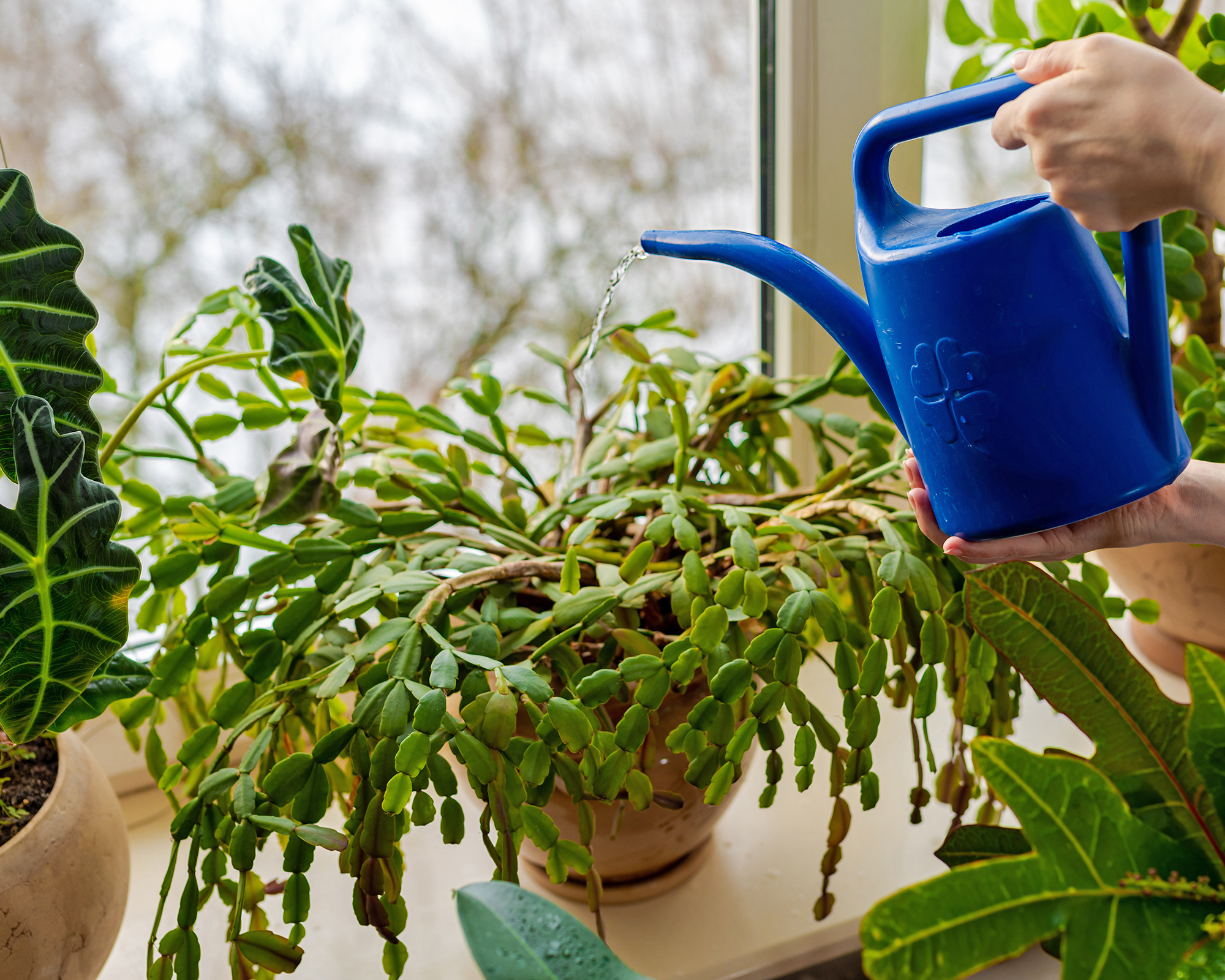
6. Yellow Leaves
A Christmas cactus with yellow leaves is frustrating as several causes can be behind the issue. It's usually a process of elimination.
The most serious culprits are root rot or disease, so check for these and act fast to treat plants where affected. When plants are overwatered, this will quickly lead to root rot.
While Christmas cacti like their roots to be fairly confined, if they are rootbound plants may struggle to take enough nutrients from the soil. Likewise, a lack of fertilizing may also be the issue.
Too much direct sunlight during the warmer months can give the leaves a yellow, lackluster appearance, so if that is the suspected cause, then move the plant to a spot where it receives bright indirect light.
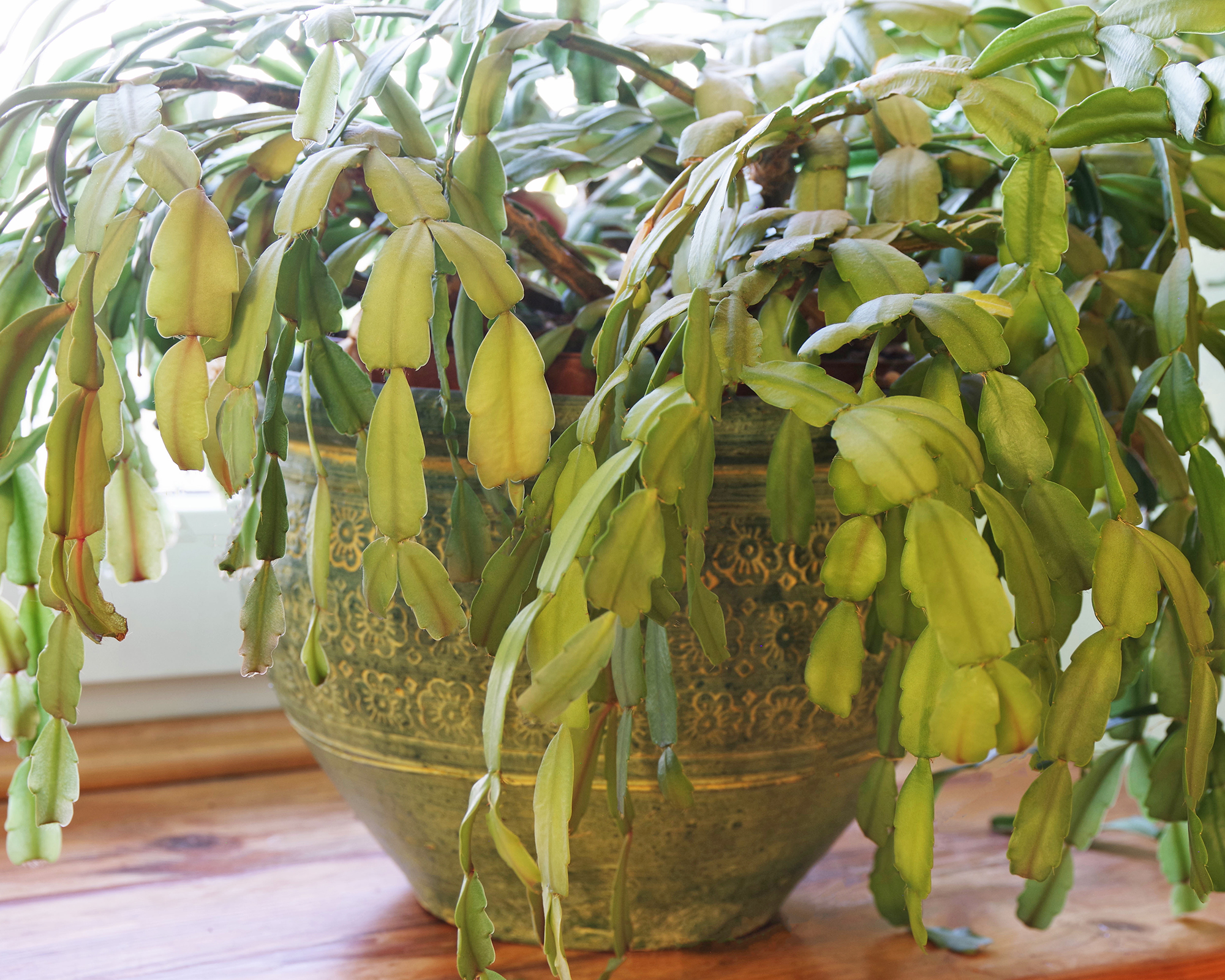
7. Dropping Leaves
A Christmas cactus dropping leaves is usually caused by one of two issues. Too much moisture is the biggest culprit and is easy to spot if the shedding is accompanied by yellowing leaves.
As well as overwatering, too much moisture can be caused by poorly draining, impacted soil, so where all else fails repot the plant.
The other problem affecting leaves is incorrect temperature. Too much heat or cold can cause leaves to drop. In general, Christmas cacti thrive in temperatures of 70 to 80°F (21-27°C) during spring and summer, and around 10°F cooler over fall and winter.
Try to minimize sudden temperature changes, and avoid placing the plant close to air vents or heating outlets.
Some leaf drop is normal when bringing outdoor Christmas cactus plants back indoors after summer. They should soon recover with a little TLC.
8. Bud Drop
Buds falling off Christmas cactus plants is one of the most common issues to frustrate growers, resulting in the loss of flowers right before the finishing line.
Common culprits are under or over-watering, lack of humidity, temperature changes, drafty conditions, and excessive heat.
Incorrect lighting levels may halt the production of buds, so ensure the plant is receiving at least 13 dark hours each night during fall and winter.
Too much fertilizer may also be to blame, as it can force the plant to put on an abundance of blooms that it has to drop some to make way for more.
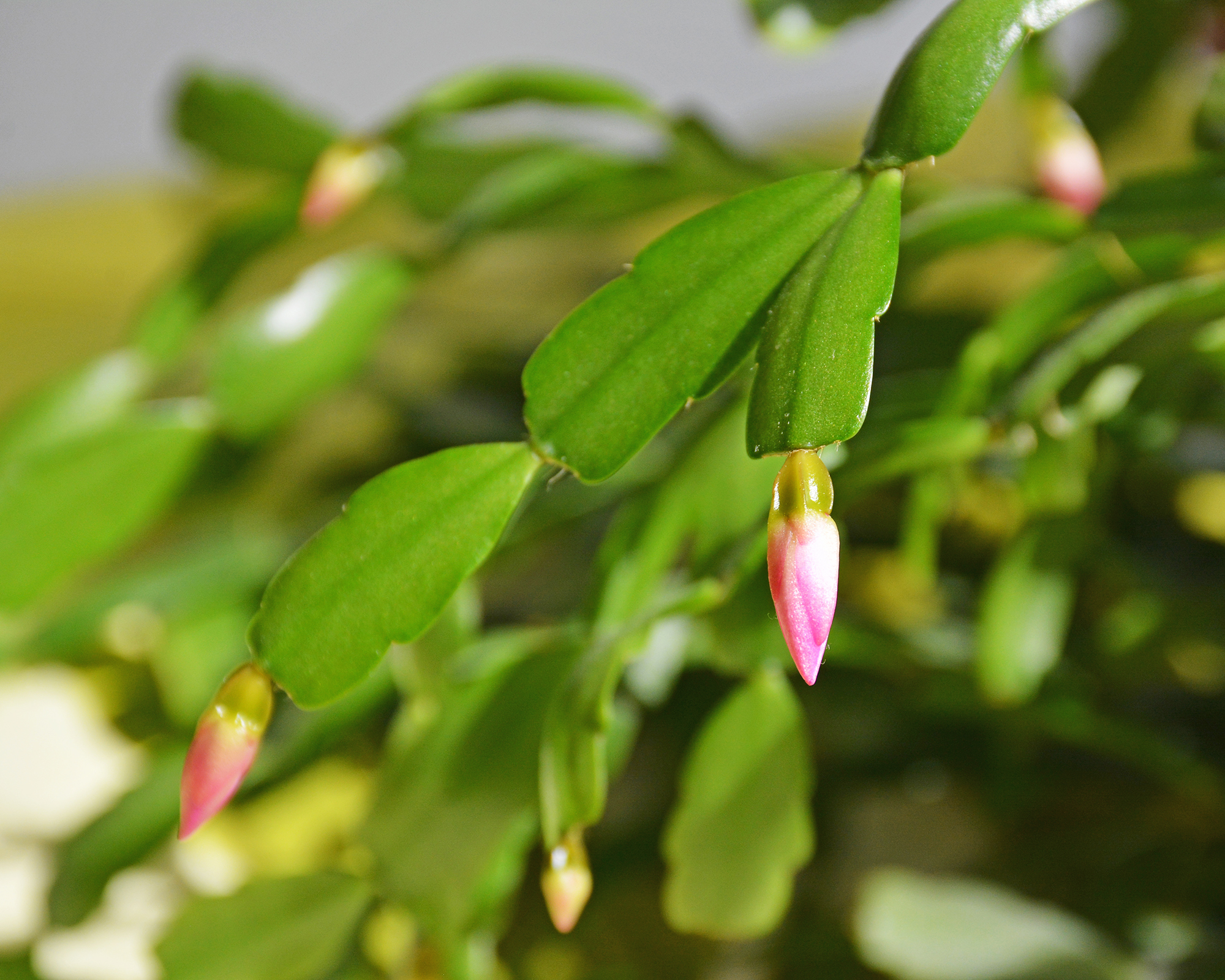
9. Flowers Wilting or Falling Off
Christmas cactus flowers falling off, usually following a brief period of wilting, is often caused by underwatering. While plants hate to have soggy roots, they do need moisture to thrive and flower.
Usually, the best method of watering Christmas cacti is to soak the soil when dry and let it drain through. However, it's best to avoid deep watering while the plant is flowering, as it can cause blooms to wilt and fall off. Avoid fertilizing at this time too.
A sudden temperature change may shock the plant causing flowers to drop, so avoid moving it in the build-up to blooming.
Another possible culprit is a lack of humidity. As tropical plants, Christmas cacti prefer a fairly humid environment. You can raise humidity for houseplants by placing the pot on top of a tray of pebbles filled with water – but don't let the soil sit in the water.
10. Pests
If you move your plant outdoors in the warm weather, you may be inviting several Christmas cactus pests to infest the plant. Mealybugs and scale are often found on outdoor cacti. Mealybugs show up as white, cotton-like masses in the leaf axils, while scale is a hard-bodied, oval to round, insect in various colors.
They can cause weakened plants, stunted growth, and in severe infestations, plant parts begin to die and fall away.
Spray with insecticidal soap every 7-10 days or rub the infected plant parts with a cotton ball dipped in alcohol to wipe them away. Soil or fungus gnats are common even indoors, especially when the soil is overwatered.
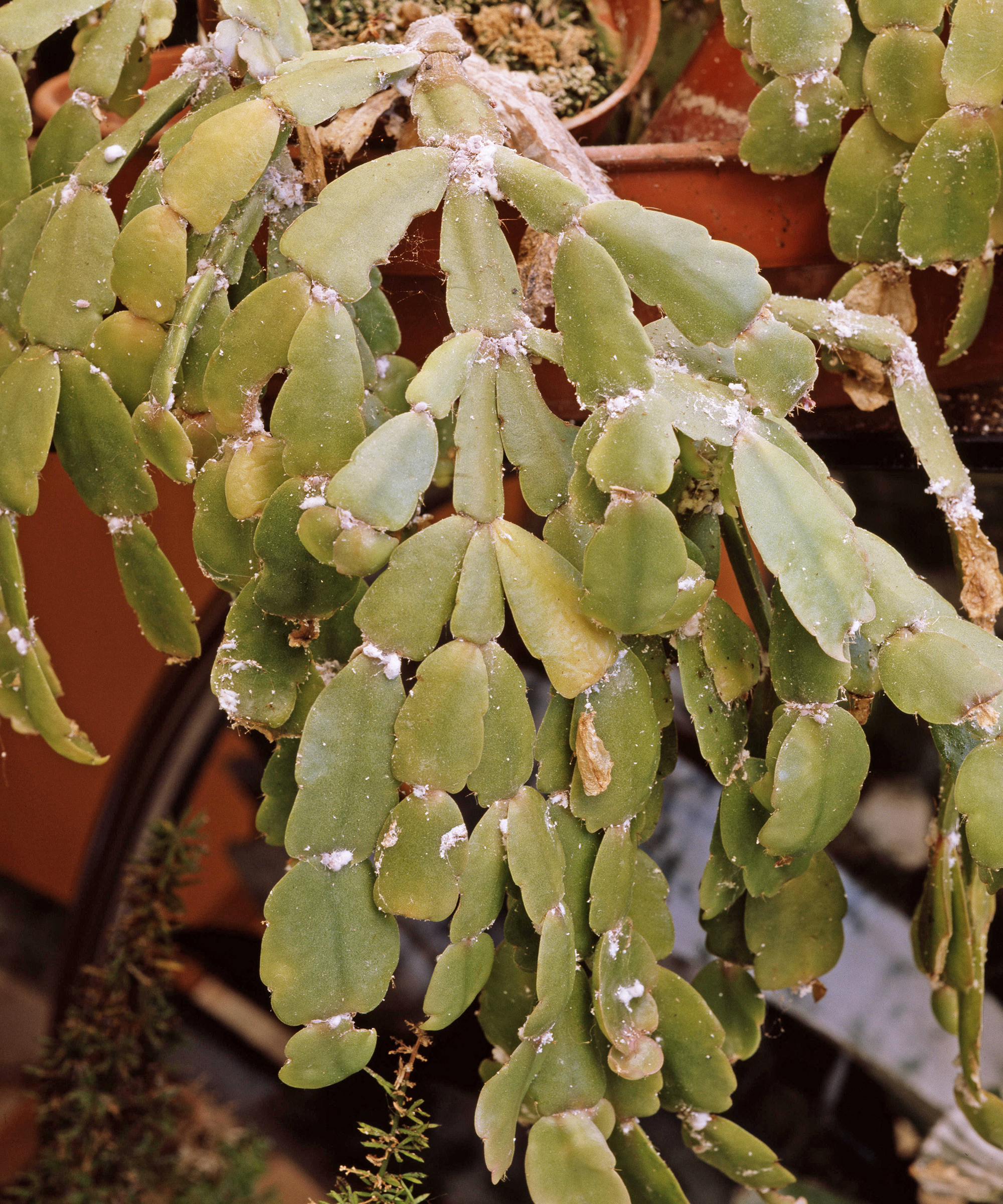
More Houseplant Inspiration
- Learn how to choose the perfect houseplant combinations for every room in your home.
- See 9 hard-to-find houseplants that will turn your collection from ordinary to extraordinary.
- Discover stunning orchid types to grow in your home and garden – from easy beginner varieties to rare and exotic species.
- Grow an indoor oasis with our essential houseplant buys in the Gardening Know How Shop.

Melanie is an experienced gardener and has worked in homes and gardens media for over 20 years. She previously served as Editor on Period Living magazine, and worked for Homes & Gardens, Gardening Etc, Real Homes, and Homebuilding & Renovating. Melanie has spent the last few years transforming her own garden, which is constantly evolving as a work in progress. She is also a passionate organic home grower, having experimented with almost every type of vegetable at some point. In her home, Melanie tends to an extensive houseplant collection and is particularly fond of orchids.
- Bonnie L. GrantWriter
- Amy DraissDigital Community Manager
